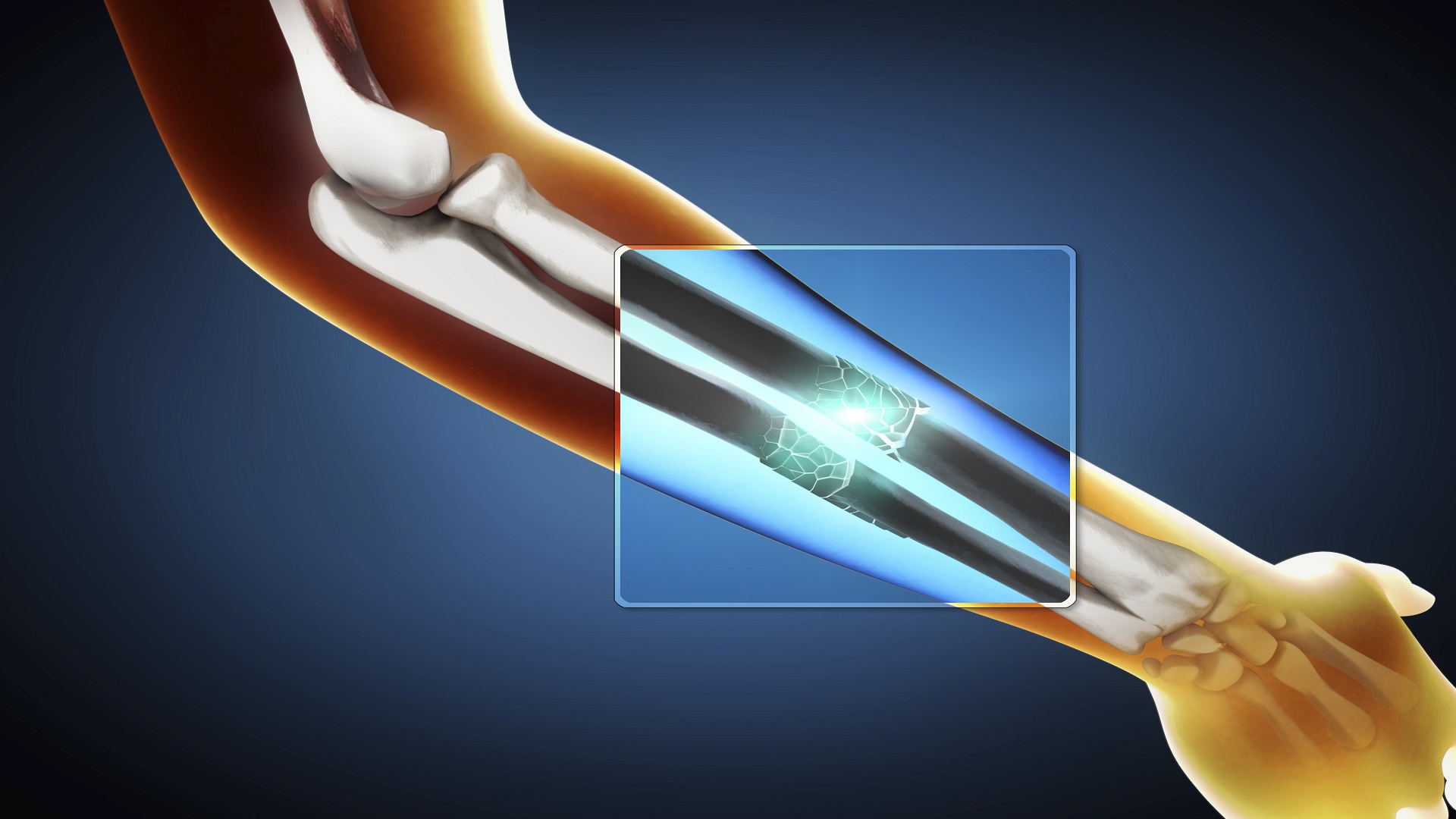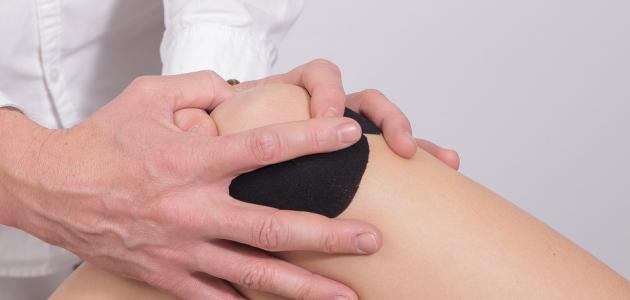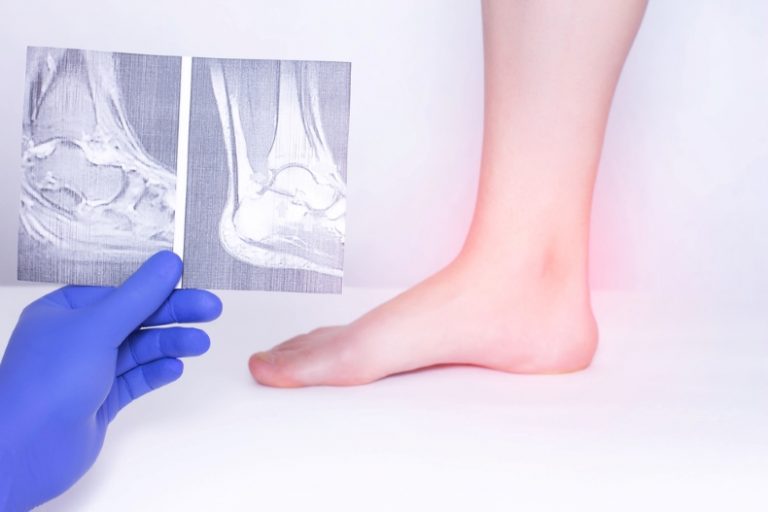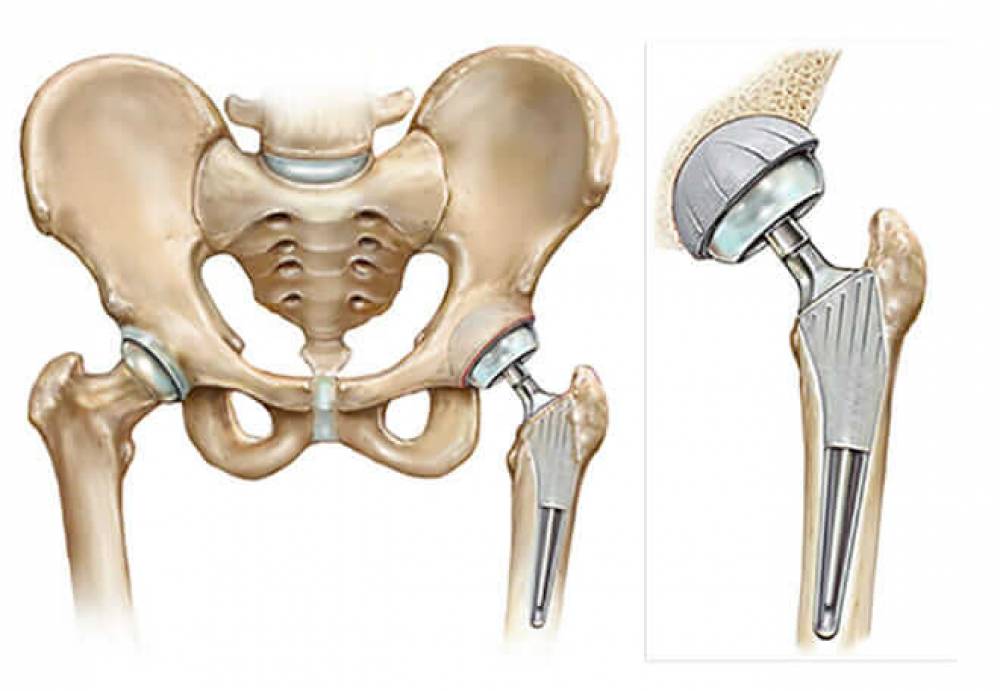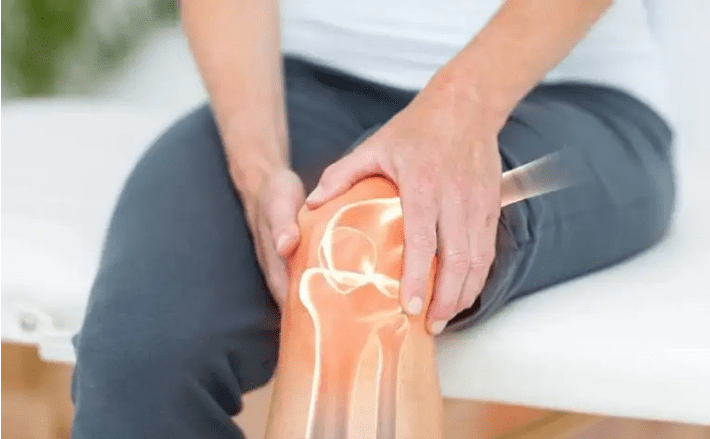What is the success rate of hip joint replacement surgery? And what is its price in Egypt?
What is the success rate of hip joint replacement surgery? There is no doubt that hip joint replacement surgery is a highly important procedure, and its success greatly affects the patient’s mobility. In the following paragraphs, we will highlight the various stages that this procedure goes through and how to maintain the artificial hip joint after its placement, along with the most recommended instructions by most doctors. Stay tuned for more information.

What is the success rate of hip joint replacement surgery?
Prepare for a pain-free body with Dr. Amr Amal and his specialized medical team for hip and thigh joint replacement.
Hip joint replacement surgery is one of the most important procedures that many people are interested in due to its significance and its role in helping patients regain their mobility. It is an ideal solution that doctors turn to in order to alleviate the patient’s pain and improve their mobility. Its success rate is high and depends on the patient’s condition, as well as any chronic diseases they may have, such as diabetes. During this surgery, the doctor removes the dead and damaged parts in the joint area and replaces them with an artificial one, which we will learn more about in the following paragraphs.
Is hip joint replacement surgery dangerous?
Hip joint replacement surgery itself is not dangerous but is highly safe with a high success rate. However, there can be some complications that include:
- Blood clots: There is a possibility of blood clots forming in the leg veins after the surgical procedure, which can pose a significant risk to the patient’s health if they travel to the lungs, heart, or brain. This is a rare condition, and patients may be prescribed blood-thinning medications to reduce this risk.
- Fracture: Sometimes, fractures of the healthy parts of the hip joint may occur during surgery. In some cases, small fractures may heal on their own, while larger fractures may require fixation with wires, screws, metal plates, or bone grafts.
- Dislocation: In certain cases, the new joint may dislocate from its socket, particularly in the first few months following surgery. The use of a brace can help improve the situation, but if the hip remains dislocated, it may require surgical intervention.
- Leg length discrepancy: The surgeon takes precautions to avoid this issue, but occasionally, the new hip joint may result in one leg being slightly longer or shorter than the other. Gentle stretching exercises can help strengthen the surrounding muscles to mitigate this discrepancy, and minor differences in leg length are often not noticeable after a few months.
- Infection: The surgical site may become infected, including the deep tissues near the new hip joint. Infections are treated with antibiotics, but severe infections near the new hip joint may require surgical removal of the artificial components.
- Nerve damage: In rare cases, nerves in the area where the implant is placed may be injured, leading to numbness, weakness, or pain in that area.
- Loosening: This complication is less common with modern implants, but the new joint may not be securely anchored to the bone or may become loose over time, resulting in severe hip pain that may require additional surgery.
If you would like to learn more about hip joint replacement and the risks associated with the procedure, you can continue reading this article.

How long does a hip joint replacement surgery take?
One of the questions many people seek an answer to is the duration of a hip joint replacement surgery, which typically ranges from one to two hours. If you are looking for more details regarding the time required for a hip joint replacement surgery, we recommend you continue reading the following article.
The hip joint replacement surgery consists of several steps, including the following:
Step 1: Patient Preparation and Medical History Assessment
Before the surgery, the specialist physician prepares the patient by:
Providing psychological support to the patient and informing them that the steps of the surgery are straightforward, and its success rate is high. The patient should discuss with their doctor the medications they are taking in the period leading up to the surgery. Discussing the final cost of the surgery, including all its steps. Conducting necessary tests required by the doctor. Discussing the surgical procedures and the correct steps involved. The patient is required to follow a proper diet to reduce weight before the surgery. Performing X-rays of the hip joint to determine the next steps.
Step 2: Necessary Tests and Radiographs Before the Surgery
The phase of performing tests and radiographs, as requested by the doctor, is essential to assess the patient’s overall condition before the surgery. This phase includes:
Complete blood count analysis. Erythrocyte sedimentation rate (ESR) analysis. Analysis of liver and kidney enzymes and functions. Magnetic resonance imaging (MRI) of the hip area.
Step Three: Operating Room Preparation
One of the most crucial factors for the success of any surgery is attention to cleanliness and sterilization, which begins within the operating room and is carried out as follows:
- An anesthesiologist must be present in the operating room alongside the patient throughout the procedure.
- The specialized orthopedic surgeon for the case must also be present.
- An adequate nursing team, carefully trained in surgical procedures and management, should be available.
- A suitable quantity of the patient’s blood type should be on hand in case of any issues requiring a blood transfusion during the operation.
- The artificial hip joint, which will be implanted in the patient, should be readily available.
Step Four: Anesthesia and the Procedure
The steps of the procedure are carried out under the influence of general anesthesia for the patient, although in some cases, local anesthesia may be used. The surgeon begins by making an incision or opening in the hip area and removes the upper part, known as the femoral head. Then, a metal ball is placed in its position, acting as the artificial joint, and the hip is lined from the inside with a layer of metal, covered with a layer of plastic.
Certain types of joints may require cementing in the hip area after placing the artificial joint, while others do not need this, as the bone area naturally grows and integrates with the artificial joint, without the need for adhesive or fixatives.
Step Five: Conclusion of the Procedure
After completing the operation, the patient remains in the hospital for a day or more, depending on their health condition. The doctor monitors their health and ensures that all body functions are functioning correctly. Rehabilitation therapy may begin for the patient to regain their mobility through specific physical exercises supervised by the orthopedic surgeon and a physical therapist.
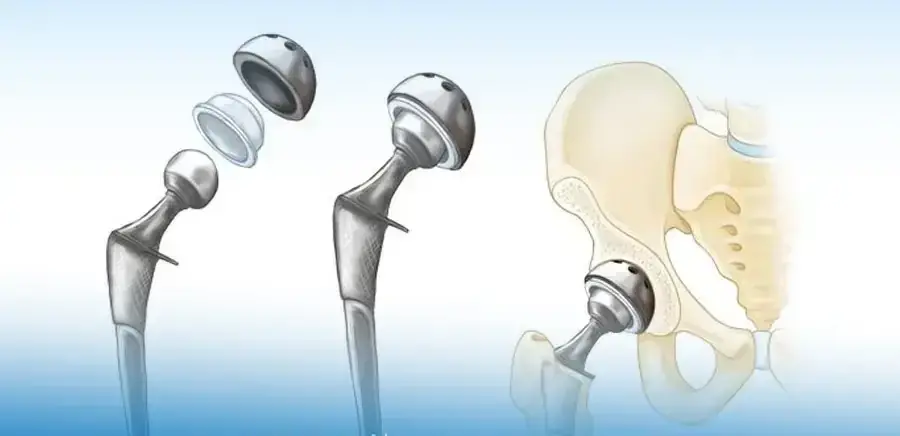
Pain After Hip Joint Replacement Surgery
After undergoing the surgery, the patient may experience some pain in the first few days following the procedure, which is normal. However, this discomfort can be managed and controlled by taking anti-inflammatory drugs and pain relievers, either orally or intravenously. One of the most important recommendations given by orthopedic surgeons to their patients is to apply cold compresses to the surgical site to reduce swelling and alleviate pain.
Subsequently, the patient begins to move and test the new joint by gradually practicing walking during their hospital stay. A physical therapist assists in teaching the patient the proper way to use the artificial joint while walking, climbing stairs, and even bathing. Crutches are used to reduce the weight on the new joint until it heals and stabilizes in its position.
When Does Walking Begin After Hip Joint Replacement?
Usually, patients begin walking after hip joint replacement surgery on the same day as the procedure or the following day, using crutches or a walker, depending on the weight the new joint can bear after the surgery. More information about essential exercises to be performed after a hip joint replacement can be found by clicking here.
Movement should initially be simple and limited, performed slowly for about 20 to 30 minutes. This plays a significant role in promoting blood circulation and maintaining muscle strength. It should be noted that the patient may not have the ability to perform certain movements for several weeks after the surgery. Additionally, they will require assistance from those around them to stand up and may experience discomfort and some pain during movement and exercise.
What Are the Stages of Recovery After Hip Joint Replacement Surgery?
Don’t let pain control your life. Contact us today and schedule your consultation with Dr. Amr Amal, and get ready to fully recover your life and regain the activity and freedom you deserve.
After completing the hip joint replacement surgery, the patient remains in the hospital for a period ranging from 3 to 5 days, depending on the speed of recovery, the type of joint, and the surgery the patient underwent. Subsequently, the patient begins to walk gradually, and the doctor starts testing the patient’s ability to stand and walk without assistance.
In most cases, the recovery period takes about 6 to 8 weeks after the surgery, after which the patient can return to their normal life. The recovery process depends on the patient’s commitment to follow-up appointments with their doctor to ensure the joint is healthy and free from complications.

Duration of Recovery After Hip Surgery
The recovery or healing period following surgery naturally varies from person to person. Most people experience significant improvement after three months following surgery, with the recovery and improvement continuing until the end of the first year. Here are detailed figures for the 12 weeks following surgery, indicating the progress made by the patient:
Days 1-2: The patient begins to return to their pre-surgery diet, using oral pain relievers and anti-inflammatory drugs instead of injections. Day 3: If the patient appears to be in good health and does not experience any complications, they can be discharged from the hospital. Days 4-9: The amount of medication and pain relievers the patient takes is reduced while adhering to physical therapy sessions and wound care instructions. Days 10-14: During this period, the patient can remove medical staples and is able to take a shower. Weeks 3-6: The patient can perform some daily tasks without the need for crutches, such as driving and walking. Weeks 10-12: The patient’s body begins to return to normal, and they can engage in their usual activities.
How Much Does Hip Joint Replacement Cost in Egypt?
In Egypt, the cost of hip joint replacement surgery varies depending on several factors. The price of artificial hip joint surgery depends on the quality of materials used in manufacturing, the surgical techniques employed, hospital stay costs, and post-operative care expenses. Additionally, there can be price variations between different hospitals in Egypt.
Typically, hip joint replacement surgery in Egypt ranges from 100,000 to 150,000 Egyptian pounds. However, this can vary based on the factors mentioned above. Individuals are advised to research thoroughly before deciding to undergo the procedure at different hospitals, as there can be significant price differences.
Although the cost of hip joint surgery is often high, the procedure is necessary for patients suffering from hip joint arthritis who experience chronic pain and inflammation. People should not give in to high prices but should seek clinics and hospitals that offer lower prices without compromising on quality and medical standards.

How to Maintain an Artificial Hip Joint?
We believe that precise consultation and accurate diagnosis are the foundation of success. Therefore, Dr. Amr Amal and his medical team will evaluate your condition and develop a customized treatment plan to achieve the best results for you.
There are some instructions that the patient must be aware of after undergoing hip joint replacement surgery to maintain it and prevent complications. These include:
During Daily Activities: There are important rules that the patient must adhere to during their daily activities to maintain the safety of the artificial joint. These include avoiding crossing the feet or ankles while sitting or standing or sleeping. The patient should also avoid bending the hip or bending away from the waist or lifting the legs away from the waist.
While Sitting: The patient should change their sitting position every 30 to 40 minutes and keep their feet apart at a distance of 15 cm. They should not bend their knees and feet but should keep them straight. It’s important to sit on a stable chair with a straight back, and not on a soft chair. The hip should be higher than the knee, so it’s better to have a high chair or use a cushion.
While Dressing: When putting on clothes, it’s important for the patient to sit on a chair or even the edge of the bed if possible. They should not bend or lift their legs during the dressing process. The patient should also consider using tools to assist in dressing, such as elastic shoe laces and tools that facilitate putting on shoes and socks.
During Bathing: It’s preferable for the patient to use a chair during bathing, and the chair should have a long handle to avoid bending. The patient should also ensure that the bathroom floor remains dry to prevent slipping.
While Sleeping: The patient should avoid sleeping on the side that underwent hip joint replacement for a period ranging from 4 to 6 weeks after the surgery. They should use a pillow between their legs and ankles when sleeping.
When Climbing Stairs: Climbing stairs should start with the healthy foot first, then using crutches, while descending stairs should begin with the foot that had the joint replacement first, and then using crutches.
How Long Does an Artificial Hip Joint Last?
Many experts and specialists emphasize that in the case of successful artificial hip joint replacement surgeries, patient recovery, and their well-being after the procedure, the artificial joint can last for a period ranging from 20 to 25 years at most. In the event of not replacing the joint, it may undergo what is known as wear and tear on the artificial components, which may require surgical intervention for replacement. However, this can affect the individual and lead to other problems.
Is the Artificial Joint Similar to the Natural One?
In most cases, the artificial joint closely resembles the natural joint. The artificial joint is typically manufactured from a variety of metals that are highly similar to the natural ones found in the human body. Additionally, it performs the primary function of the natural joint in terms of function and practical movement.

